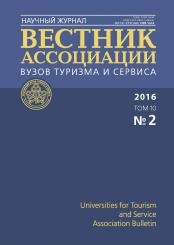Russian Federation
The article describes the problem of social and cultural adaptation and pedagogical support of continuous personal development of visually impaired (blind) people. There is a brief overview of the various aspects of this problem. The article emphasizes the urgency of creating an accessible environment for these groups of people with disabilities. It describes the psychological and pedagogical regularities underlying the design environment of personal development and important components of the environment (stimuli, procedure opportunities, developing content and communication activities), providing a process of continuously increasing the subjective status of a person in the course of its life. The article characterizes special feature of adaptation and rehabilitation of persons with disabilities who lost their sight in the later stages of ontogenesis. Authors identify the features of perception of its surroundings, typical of this group of disabled people emotional distress and special needs. They determine the need for psychological support and aid the visually impaired (blind) people with different subjective status. The authors find the solution of the stated problem of expansion of borders available for the visually impaired (blind) people environment the authors are looking for in tourism. They propose to develop for the visually impaired special kind of tour – audio tours, allowing you to recreate the sound atmosphere of the knowledge of new places and cultural attractions. The article discusses quality differences of the audio guide and audio guide. The authors provide recommendations for the design of audio tours for the visually impaired (blind) people. In addition, they propose the algorithm of the technology of creation of the audio guide consisting of five steps. They list the necessary conditions for the design of audio tours: composition required for the project implementation specialists and logistics support. The article emphasizes the social importance of the activities on the creation of audio tours for healthy people.
accessible environment, instructional design, audioguide
1. Alekseenok A.A., Dombrovskaya A.Yu. Invalidy v strukture rossiyskogo obshchestva. Fundamental´nye issledovaniya. № 1, 2013. S. 656-659.
2. Zhulkovska T. Nekotorye obstoyatel´stva postroeniya identichnosti invalidov. Znanie. Ponimanie. Umenie. 2015. № 1. S. 89-97.
3. Zemtsova M.I. Puti kompensatsii slepoty v protsesse poznavatel´noy i trudovoy deyatel´nosti. M.: Izd-vo APN RSFSR, 1956.
4. Kalishevska K. Invalidy v obshchestve znaniy. Znanie. Ponimanie. Umenie. 2015. № 1. S. 97-106.
5. Litvak A.G. Psikhologiya slepykh i slabovidyashchikh. SPb: Izd-vo RGPU, 1998.
6. Mozdokova Yu.S. Aspekty razvitiya integratsii invalidov v formirovanii subkul´turnoy spetsifiki. Uchenye zapiski Rossiyskogo gosudarstvennogo sotsial´nogo universiteta. 2009. № 10. S. 31-36.
7. Serikov V.V. Razvitie lichnosti v obrazovatel´nom protsesse. M.: Logos, 2012.
8. Khodyakova N.V. Situatsionno-sredovoy podkhod k proektirovaniyu lichnostno razvivayushchikh obrazovatel´nykh sistem: Dis. … dok-ra ped. nauk. Volgograd, 2013.
9. Brewer J. Enabling Environments / J. Brewer, A. Enders and others. World Report on Disability. - World Health Organization, The World Bank, 2011. 325 p.
10. Corn A.L. Foundations of Low Vision: Clinical and Functional Perspectives. 2nd Edition (Hardcover) / A.L. Corn, J.N. Erin. AFB Press, 2010. 976 p.
11. Jose R.T. Understanding Low Vision / R.T. Jose. AFB Press, 1983. 560 p.
12. Koenig A.J. Foundations of Education. Volume 2. Instructional Strategies for Teaching Children and Youth with Visual Impairments. 2nd Edition / A.J. Koenig, M.C. Holbrook. AFB Press, 2000. 870 p.






